The leaves of cucumbers most often turn yellow at the edges under inappropriate weather conditions, a poorly selected planting location or improper care. As a rule, such changes on the foliage do not indicate diseases or pests. But there may be exceptions.
Content
Reasons why leaves around the edges turn yellow
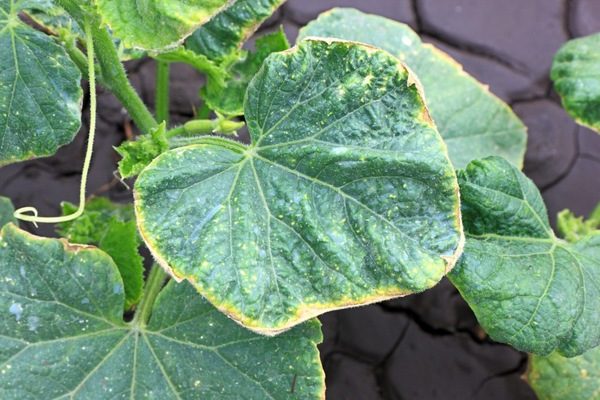
This is perhaps the most common problem when growing cucumbers. Do not neglect such signals from the plant. In the presence of yellowness along the edge of the leaf in cucumbers, their fruiting is significantly reduced in time. There are 6 main factors leading to a similar problem.
Temperature changes
Cucumbers are a thermophilic culture. In addition, with sharp jumps in temperature, their leaves turn yellow at the edges. This leads to stunting and deterioration of fruitful qualities.
When growing cucumbers in a greenhouse, it is necessary to carefully control the temperature regime. If it is too hot, then good conditions will arise for the reproduction of bacteria, and the roots of the plants can rot.
Unsuitable growing area
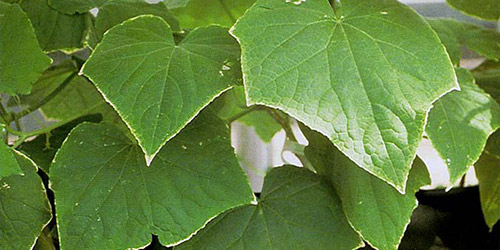 The appearance of a yellow border on the leaves of cucumbers may be the result of an improperly chosen place for growing. Particular attention should be paid to the illumination of the plant. Cucumbers are a photophilous culture. But with too intense exposure to the sun, the leaves turn yellow, the soil quickly loses moisture. In this case, the creation of a shaded area above the landing will help. In the sunshine, it is better to shelter the plant.
The appearance of a yellow border on the leaves of cucumbers may be the result of an improperly chosen place for growing. Particular attention should be paid to the illumination of the plant. Cucumbers are a photophilous culture. But with too intense exposure to the sun, the leaves turn yellow, the soil quickly loses moisture. In this case, the creation of a shaded area above the landing will help. In the sunshine, it is better to shelter the plant.
Planting a culture in the shade is not a good idea. The ground under the plant will be constantly moistened, and the leaves will not receive the necessary dose of ultraviolet radiation. Therefore, the best landing option is partial shade.
Nutritional deficiencies
The surest sign that the plant lacks trace elements is the spread of yellowness from the edge of the sheet throughout its plate. To solve this problem, you need knowledge about what nutrients a plant needs:
- First of all, cucumbers need potash fertilizers. They help increase the plant's immunity to diseases and pests, as well as improve the taste of the fruit. There is a lack of potash fertilizers with a yellow-lime border on the leaves, the bitter taste of the fruit, as well as long shoots with a small number of ovaries. Calimagnesia or common ash will help the plant recover.
- Boron deficiency can also be manifested by the yellowness of the leaves of the plant. Usually a concomitant symptom is the curvature of the fruit. You can feed cucumbers during the flowering period with boric acid. Dilute it in a ratio of 1 g to 5 liters of water.
- The edges of the leaves turn yellow in cucumbers and with a lack of calcium. Moreover, in the absence of top dressing, they can become brown and lethargic. In this case, chalk, dolomite flour, and any other fertilizer containing calcium will help.
- When growing cucumbers on sandy soils, additional introduction of manganese is necessary. A micronutrient deficiency appears with tubercles on leaf plates and their gradual yellowing from the edge to the center.
- A weak-looking plant, the absence of ovaries indicates a lack of nitrogen. The leaves of the cucumbers in this case turn yellow and dry. Correct the situation using ammonium nitrate.It is better to make top dressing before the fruits are tied up, since nitrogen accumulates in them.
- The yellow edges of the upper leaves indicate a lack of iron. Iron sulfate will cope with the problem.
Watering
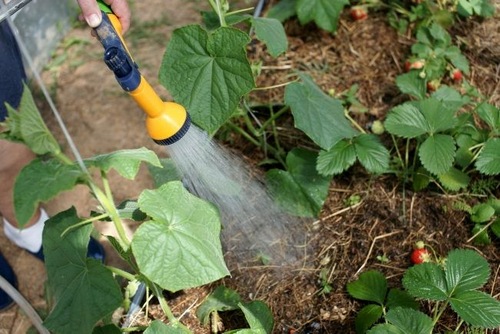 In dry and sunny weather, it is recommended to water the plant abundantly daily. In moderate weather conditions, it is enough to do this 2-3 times a week.
In dry and sunny weather, it is recommended to water the plant abundantly daily. In moderate weather conditions, it is enough to do this 2-3 times a week.
If you do not provide the culture with sufficient moisture, then the roots will begin to look for it on the surface and dry out under the sun. This in turn will lead to yellowing of the leaf plate and ovaries. Excess water also negatively affects cucumbers. Rot forms in the root system. Subsequently, it spreads to the stems, and the leaves become light.
Yellowing Diseases
Fungal diseases often affect the plant. Leaves begin to turn yellow when infection of cucumbers of one of the diseases:
- Powdery Mildew It appears white plaque and yellowing of the edge of the sheet plate. At the first signs of powdery mildew, the plant should be treated, otherwise all leaves will fall. As a finished product, you can recommend the “Bordeaux mixture” and “Topaz”. Organic lovers can use mullein. Most often, the appearance of the fungus is caused by watering with cold water and sudden temperature changes.
- Fusarium Starts with yellowing of the edge of the sheet. Gradually, the disease spreads to the entire plant. Spores of the fungus block the access of nutrients. This fungus cannot be removed simply by spraying cucumbers. The infected bush should be removed from the site and burned.
- Root rot. It leads to decay of the root system of the plant. Gradually yellow leaves, starting from the edge. The sick bush is removed from the soil, and ash or chalk is added to the place of its cultivation for prevention.
Pests
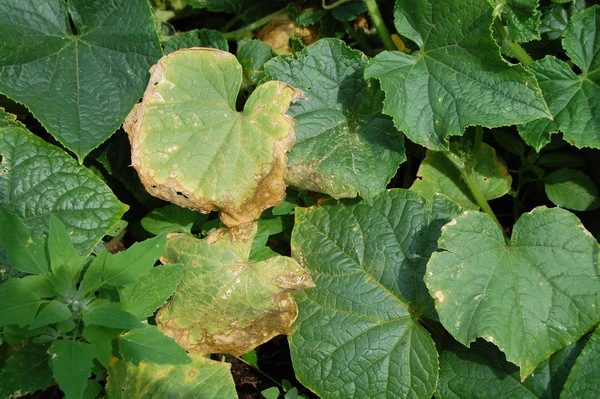 If a yellow border appears on the leaf plates of cucumbers, then they should be carefully examined for pest damage. Most often, cotton aphids, spider mites and greenhouse whiteflies attack crops.
If a yellow border appears on the leaf plates of cucumbers, then they should be carefully examined for pest damage. Most often, cotton aphids, spider mites and greenhouse whiteflies attack crops.
Fighting pests can be quite difficult, and not everyone can recognize their appearance. Therefore, to restore the bush, I most often use universal insecticides.
What to do when yellowing leaves around the edges
If yellow rims appear on the leaves of the cucumbers, then you need to immediately find out the cause and help the plant cope with the problem. Each type of cultivation has its own nuances.
In the greenhouse
In order to collect a good crop of cucumbers, it is necessary to provide the plant with comfortable growing conditions. In greenhouse conditions, some rules must be observed:
- Bushes should not contain excess leaves and stepsons. Care must be taken in their formation.
- The correct watering regime. One bucket of warm water is poured under each plant. You can determine the need for watering by digging the soil between adjacent bushes. If it has not dried out, then you should wait a bit with water. On average, in moderate weather, the need for additional moisture occurs 2-3 times a week.
- The soil around each bush should be mulched. This operation will prevent it from drying out prematurely and remove weeds.
- Optimum temperature conditions. During the day, the temperature in the greenhouse should be from 25 to 30 ° C, and at night 18-20 ° C.
- Airing is a good prevention of the spread of fungal infections.
- Timely dressing.
Compliance with the rules of growing crops will prevent many diseases and help to get a good crop of cucumbers.
In the open ground
General recommendations for the care of cucumbers both in the greenhouse and in the open ground are similar. The plant must also be watered, fertilized, protected from pests and diseases.
But there are fundamental features of growing the culture directly in the open:
- on cold days, the beds must be covered with spanbond, film or other material suitable for this purpose;
- watering is best done in the evening or in the morning;
- pour water directly under the root, trying not to touch the leaf plates of the plant;
- weed carefully, being careful not to harm the root system of the bush.
These measures are quite capable of preventing yellowing of cucumber leaves and contribute to increasing crop yields.
On the windowsill
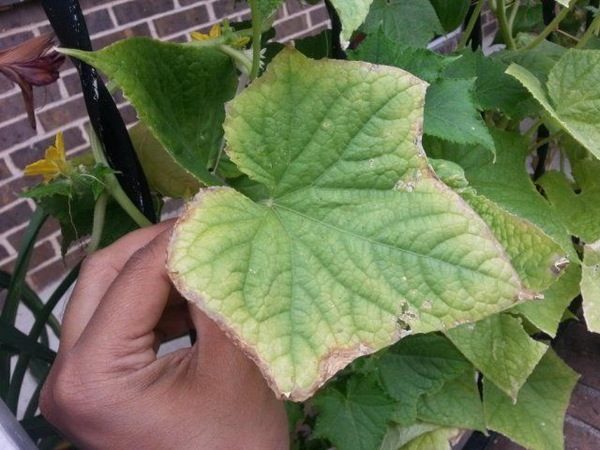 The main reasons why the edges of the leaves may turn yellow in cucumber seedlings are similar to those for adult plants. However, some features can be highlighted:
The main reasons why the edges of the leaves may turn yellow in cucumber seedlings are similar to those for adult plants. However, some features can be highlighted:
- Not enough space. If the root system is cramped, then the leaf platinum will soon turn yellow. Transplanting into a larger tank solves this problem.
- High humidity can contribute to the spread of fungal diseases. The most effective method of struggle is regular ventilation of the room.
- Wrong watering. The soil in the pots must be constantly moist. It is necessary to avoid both excessive drying out and excessive soil moisture.
- Seedlings need to be fertilized 1 or 2 times with complex mineral fertilizer. The lack of trace elements can cause the appearance of a yellow fringing on the leaves.
- A small amount of light adversely affects the color of the sheet plates. It is rational in the evening and morning to use phytolamps.
Careful observance of all these rules will protect the crown of the plant from yellowness and help to grow a healthy crop.
How to process and feed cucumbers
If the plant is already damaged, for its treatment you can use both traditional medicine that has passed the test of time, and a variety of chemical preparations.
Preparations
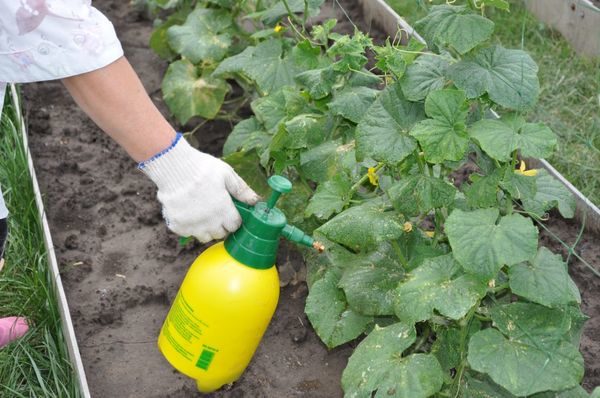 First you need to find out the cause of yellowing. And then apply the appropriate remedy as intended. List of the most common drugs to help cucumbers:
First you need to find out the cause of yellowing. And then apply the appropriate remedy as intended. List of the most common drugs to help cucumbers:
- Fitosporin. Helps to cope with underlying diseases. Spray the solution onto the bushes during the flowering or growing season. The drug contains special phytobacteria and microelements. For 5 liters of boiled water take 15-20 g of powder. Before use, the mixture should be infused for 30-40 minutes. Cucumbers are sprayed once a week for a month.
- Oksikhom. This is a universal tool that allows you to get rid of most diseases of garden crops. In 10 liters of water, 20-30 g of the drug is diluted. Spray cucumbers twice a month.
- Topaz. It can be used not only for the treatment of plants, but also for the prevention of diseases. Topaz is available in various forms, but it is easiest to apply powdered. In 10 liters of water, 20 g of the drug are diluted. Spraying is done 2 times a month. If after 30 days the leaves still turn yellow, then the treatment can be extended for another 1 month.
- Quadris. It is used to get rid of diseases of horticultural crops, as well as to prevent their occurrence. In 2.5 liters of water add 200 ml of the drug, mix thoroughly and add another 2-4 liters. The solution is suitable for use during the day.
Folk remedies
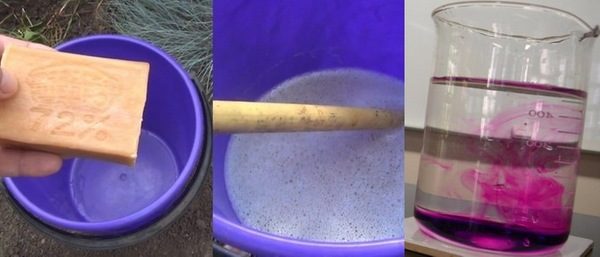
Alternative methods are effective at the very beginning of the development of a disease of culture. If you managed to notice the manifestations of the disease at the initial stage, you can use one of the methods:
- In 5 liters of water add 1 liter of whey and half a glass of sugar.This composition will help to quickly form the ovaries.
- 700 g of onion husks are boiled in a bucket of water, insisted for 10-12 hours, and then diluted with water in a ratio of 1 to 4. Such a solution is able to drive pests from the leaves.
- At an early stage of pest detection, cucumber bushes are treated with a weak solution of magnesium potassium permanganate.
- Tobacco control helps planted in the aisles.
- Soap solution will save you from aphids. In a bucket of water, half a piece of laundry soap and a glass of ash are bred.
- You can remove parasites manually. Do this with a sponge dampened in soapy water.
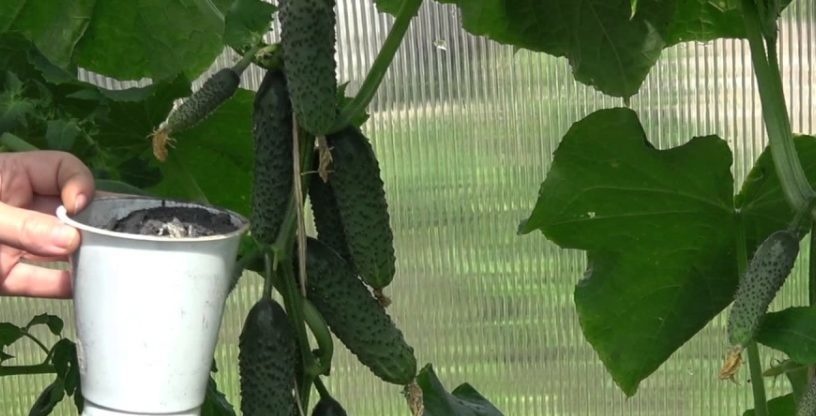 You may be interested in:
You may be interested in:If there are many pests, and diseases progress, it is worth resorting to the help of chemicals. It must be remembered that the substances contained in them are able to accumulate in the soil and fruits.
How to feed cucumbers
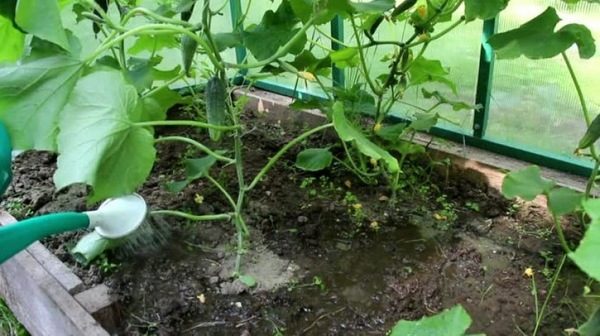 The surest way to avoid yellowness on the leaf plates of cucumbers is to regularly use nitrogen fertilizers. To prepare a solution in 5-7 liters of water, 20-30 g of fertilizer is diluted. Increasing the dosage in the expectation of a greater effect is not worth it. Too concentrated solution may burn the plant.
The surest way to avoid yellowness on the leaf plates of cucumbers is to regularly use nitrogen fertilizers. To prepare a solution in 5-7 liters of water, 20-30 g of fertilizer is diluted. Increasing the dosage in the expectation of a greater effect is not worth it. Too concentrated solution may burn the plant.
Nitrogen fertilizers can be used not only under the root of the plant. The solution can also be sprayed from a spray bottle onto cucumber leaves and shoots.
Prevention
In order to protect cucumbers and crops from spoilage, it is necessary to carefully monitor the state of the culture. A few simple recommendations will help prevent or quickly eliminate diseases and pests, as well as get a good harvest:
- a few times a month to quickly examine leaf plates for the presence of diseases and pests;
- timely weeding;
- water and loosen the soil in time;
- feed in accordance with the need and carry out preventive treatment against fungal diseases;
- observe crop rotation.
To determine the cause yellowing leaves of cucumbers many factors must be taken into account, from the taste of the fetus to the place and nature of the appearance of yellowing (the latter is easiest to determine by comparing with photos and videos of similar processes on the Internet). Despite the capriciousness of the plant, getting a good crop is quite simple. It is only necessary to take care of comfortable growing conditions and ensure timely watering and treatment against parasites.

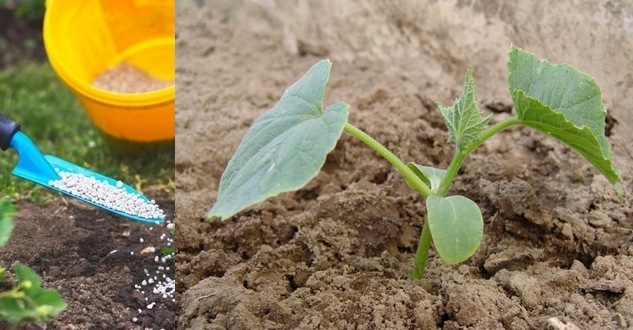
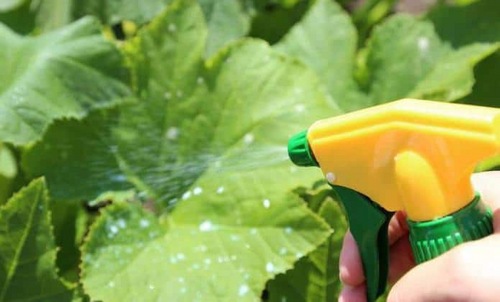
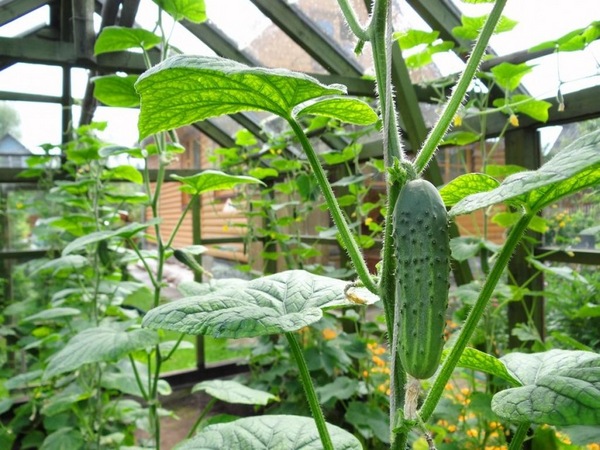
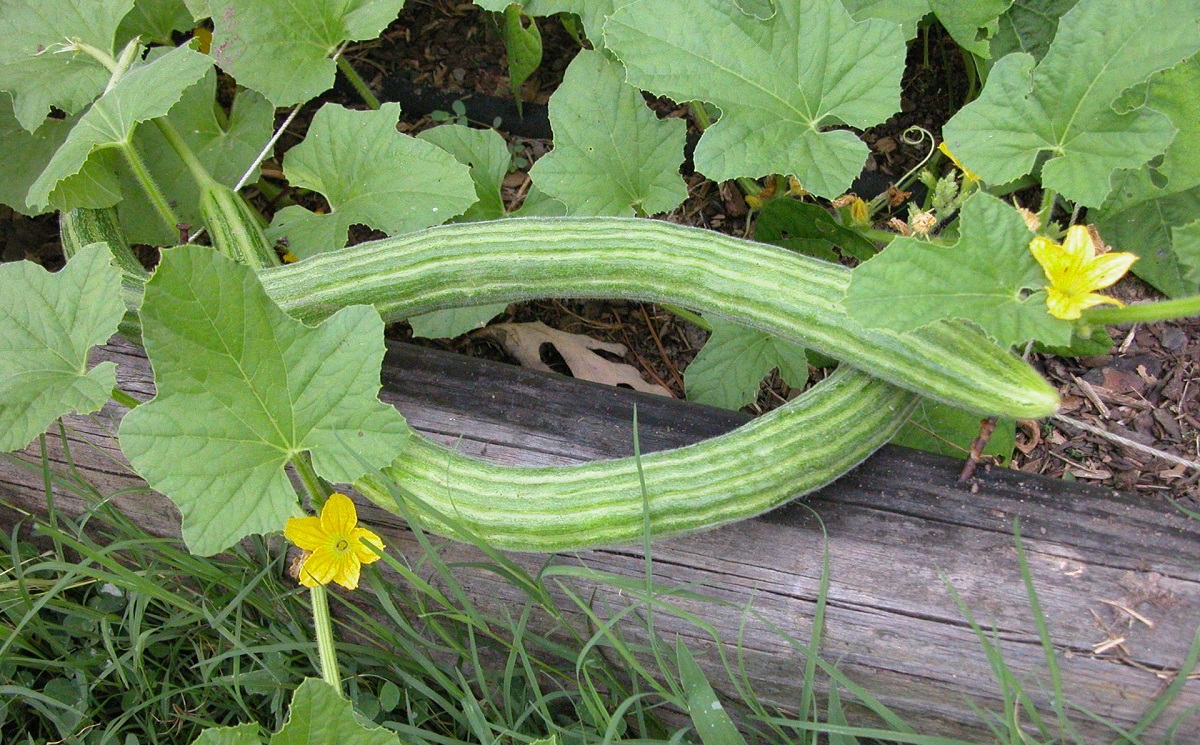 Armenian cucumber with melon flavor: description and characteristics, reviews
Armenian cucumber with melon flavor: description and characteristics, reviews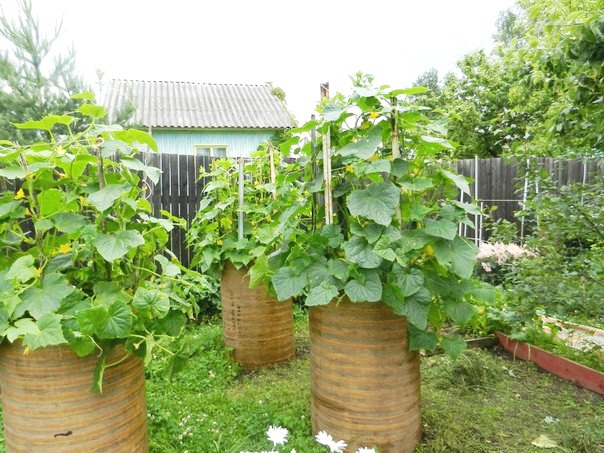 Do-it-yourself vertical beds for cucumbers: schemes, photos
Do-it-yourself vertical beds for cucumbers: schemes, photos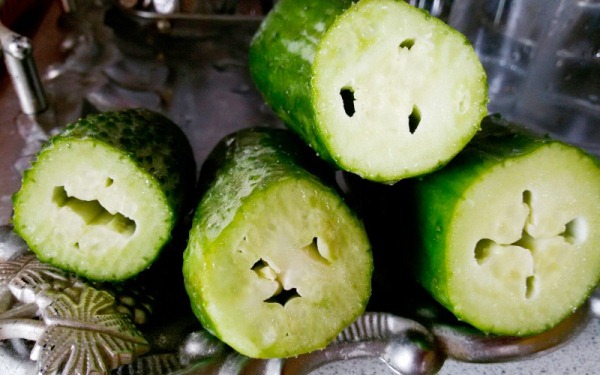 Hollow cucumbers: reasons for the appearance of hollow, what to do
Hollow cucumbers: reasons for the appearance of hollow, what to do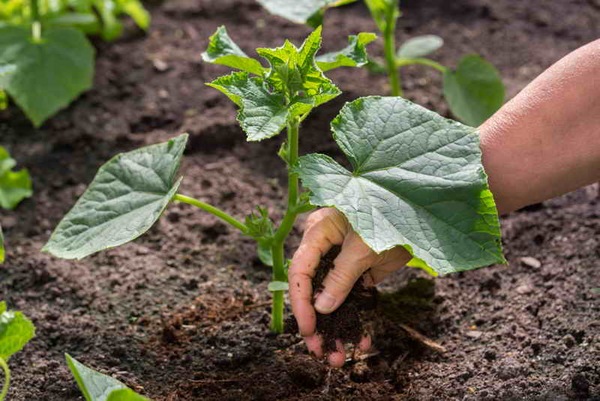 Which manure is best for cucumbers: application, how to breed
Which manure is best for cucumbers: application, how to breed